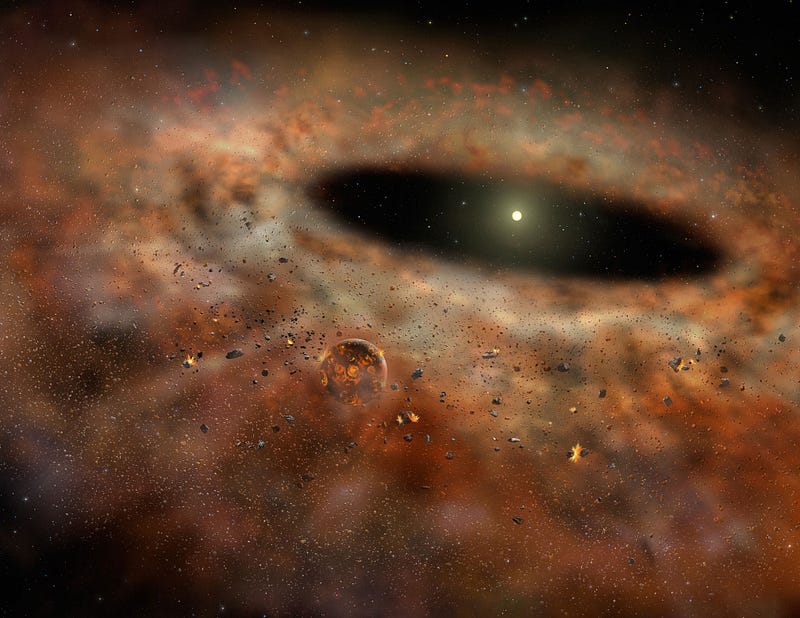Mini-Movie Monday: Genesis Episode 5, Our Galaxy’s Gravity
From our spiral shape to the heavy elements expelled in supernovae, our galaxy’s gravity reveals far more than we see.
“I think if I had to choose, I would rather have gravity instead of zero gravity. It’s fun for a while, but I’d rather live on Earth.” –Kevin A. Ford
When we take a look at our own galaxy as well as all the others, it’s clear how important gravitation is. Without it, the stars would fly off into oblivion, never forming spirals or ellipticals, and most certainly never recycling the heavy elements formed from past generations of stars into rocky planets like our own.

Yet if we take all the known matter like us that’s out there — everything made of protons, neutrons and electrons — it can’t account for all the gravitation that we see, or even close to it. So where, then, does this extra source of gravity in the Universe come from? Find out on this week’s episode of Genesis: the story of our galaxy’s gravity.
Check out all of our Genesis videos, and enjoy a full transcript of this current episode below!
Look around at our world today. With all the heavy elements we have on our world and a life-giving source of energy — the Sun — it’s a testament to the amazing things that can happen if you start with the simplest raw ingredients, protons, neutrons and electrons, and give them time.
But despite all that we see when we look out at the Universe, all the luminous stars alight in our own galaxy as well as all the others, that can’t be the entire story, or even most of it. The individual galaxies that we look at, if their masses were determined solely by the matter that we can see, both from the luminous stars and the gas and dust that are invisible to our eyes, wouldn’t behave as we see them.
Rather than rotate as the stable, grand spirals that we see, they would wind up, with the inner portions rotating far more rapidly than the outer portions. As galaxies aged over time, we should see the number of windings increase, like galactic tree rings to count their ages. But that’s not what the Universe gives us at all.
Instead, we suspect there’s some unseen type of matter that’s not only not made out of protons, neutrons or electrons, but not any of the particles we know of! There must be some kind of matter that exerts a gravitational force, but doesn’t interact with light at all, either by absorbing or emitting it. We call this “dark matter.”
As it turns out, a huge number of observations point to the existence of dark matter, including the fluctuations in the Big Bang’s leftover glow, the way our cosmic structure forms on the largest scales, and, if you think about it a little bit, the existence of us!
Wait a minute! How is our existence dependent on dark matter?
Think about what a galaxy is, and where the heavy elements that make us up come from: previous generations of long-dead stars. They lived, burned through their fuel and died in a spectacular explosion, giving rise to cataclysmic ejections of the very ingredients we needed for Earth to exist!
But without this dark matter — without the extra gravitation it would provide — these heavy elements would have escaped into intergalactic space, never to give rise to future generations with rocky planets. Without dark matter, there would be no way for our galaxy to recycle its prior generations of stars, and give rise to us.
So be thankful for our galaxy’s gravity, and for the dark matter that provides more than 80% of it. Without it, there would be no cosmic story of us.
Leave your comments at the Starts With A Bang forum on Scienceblogs!





